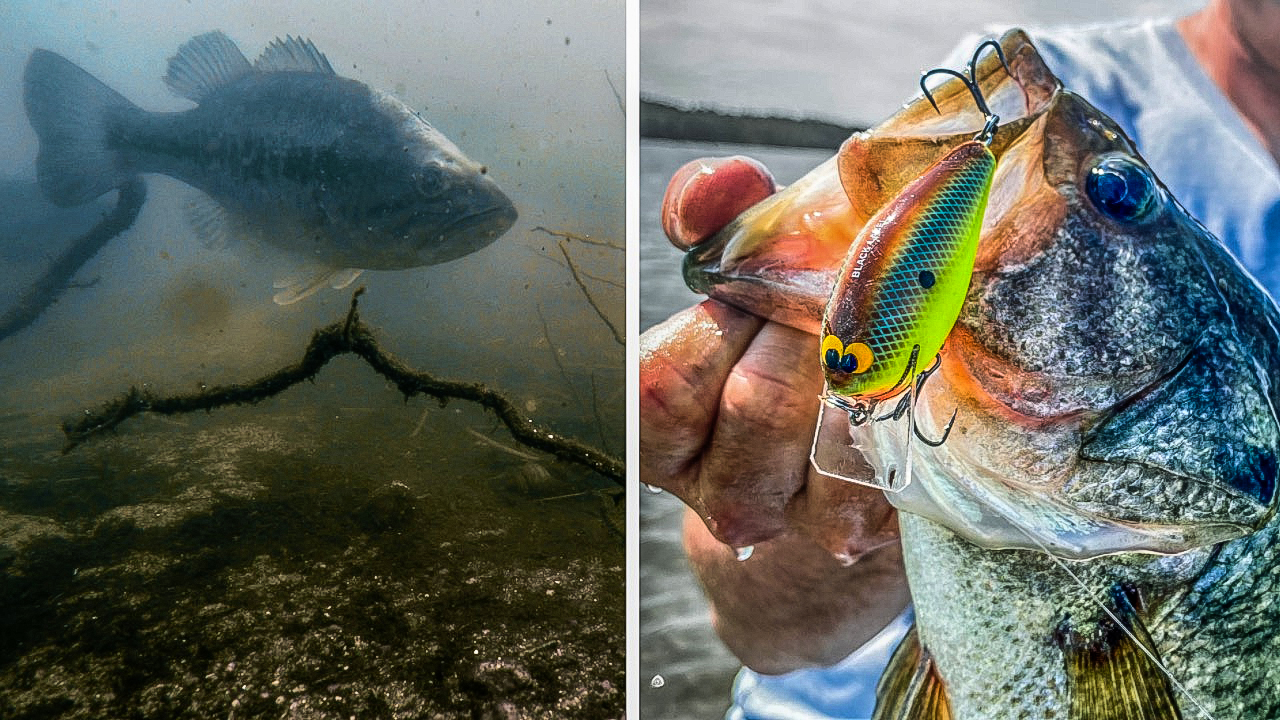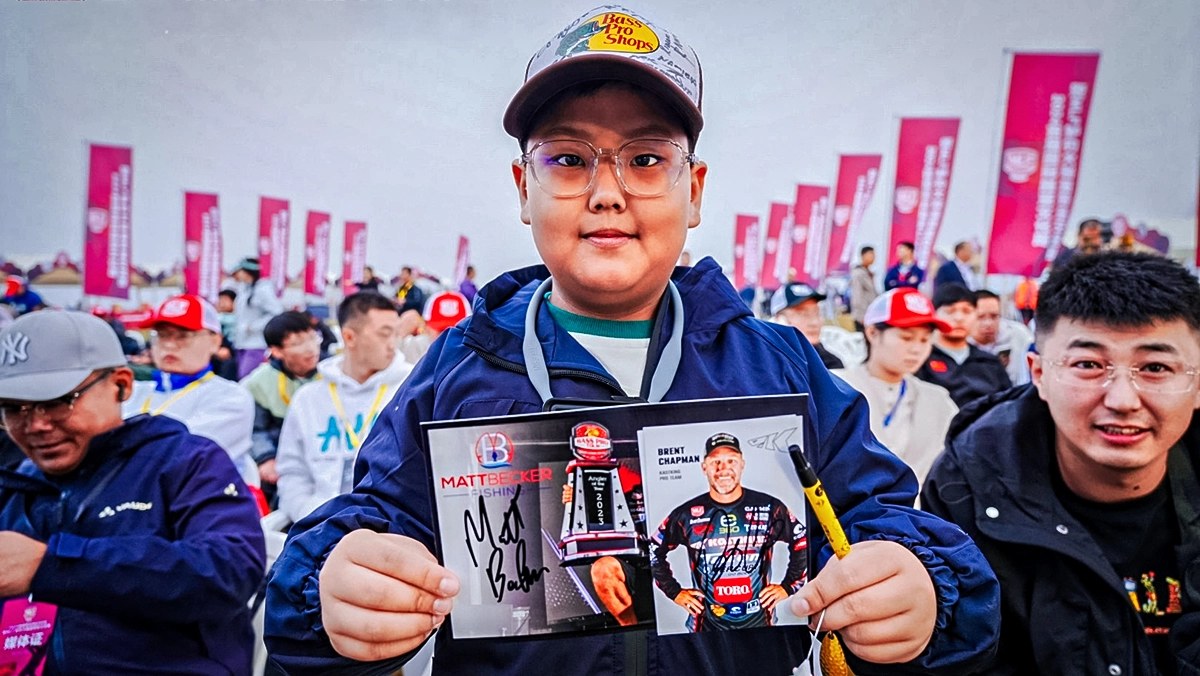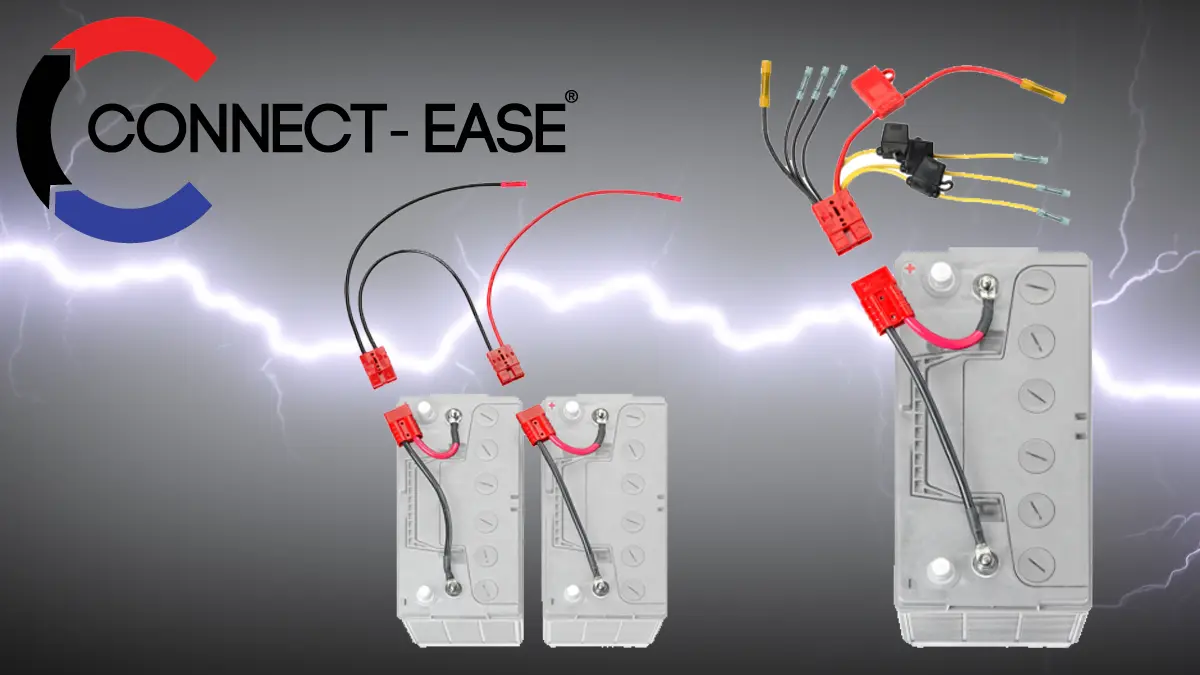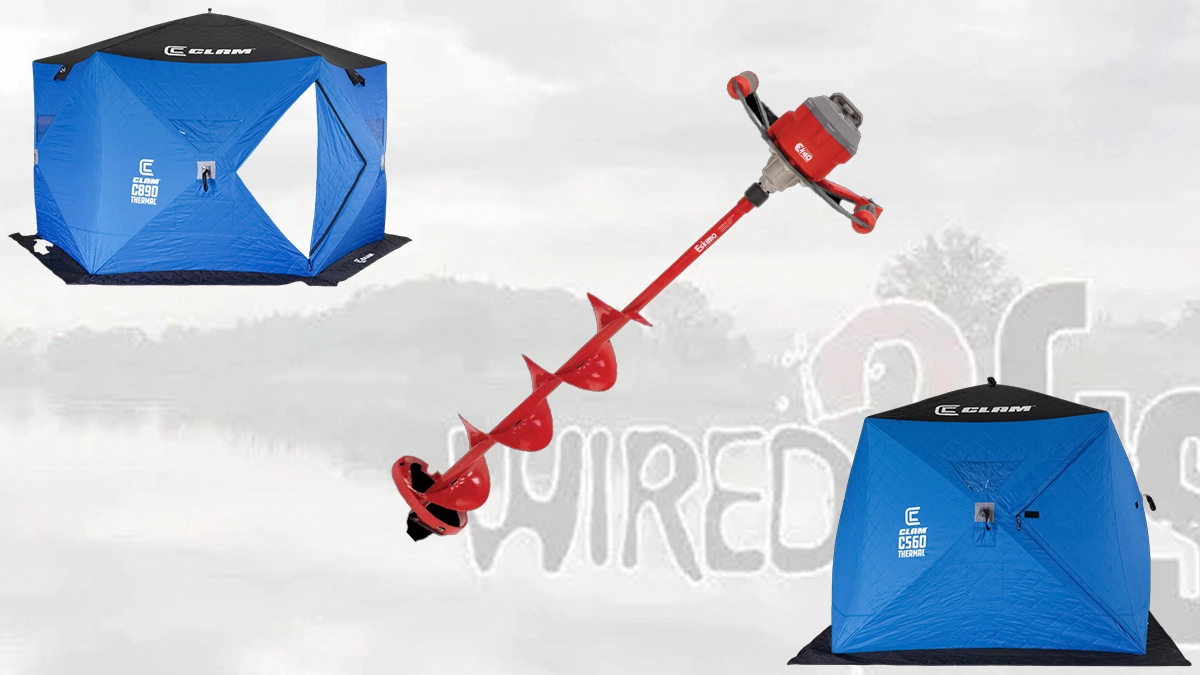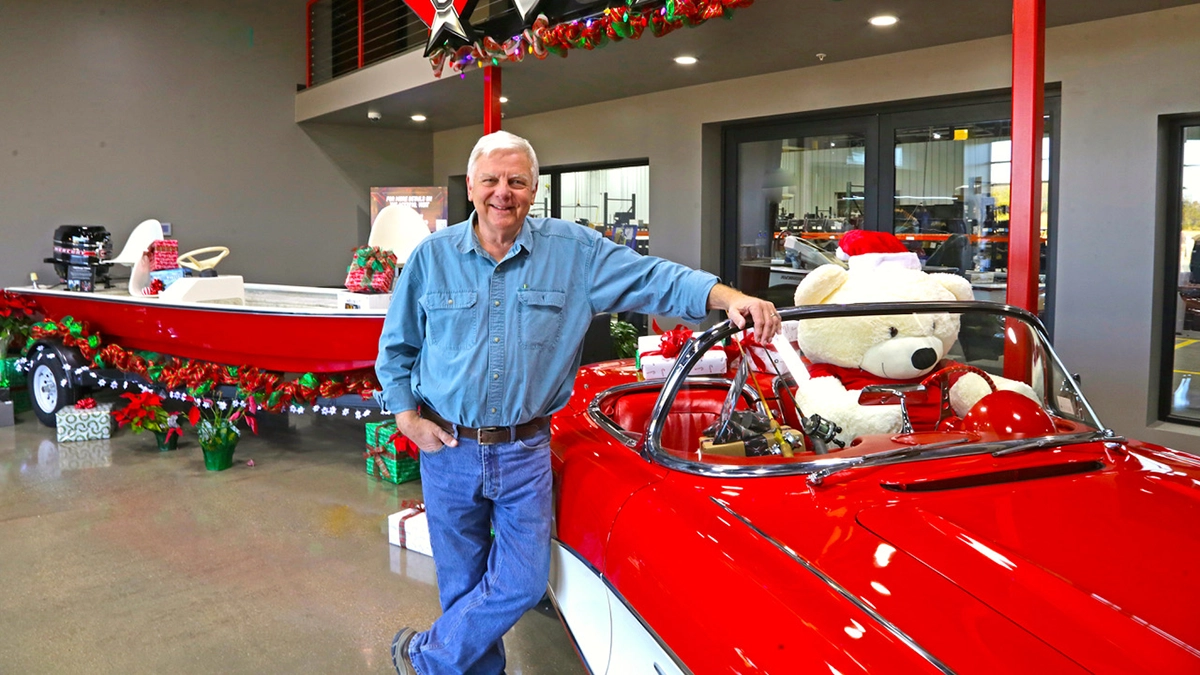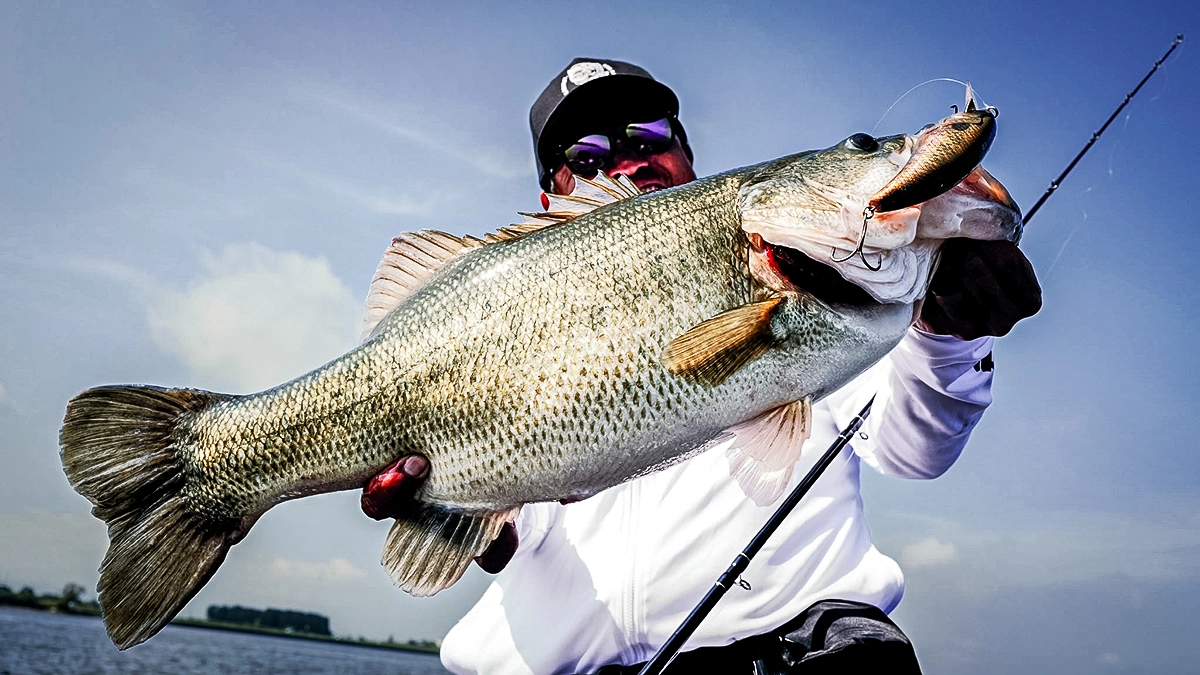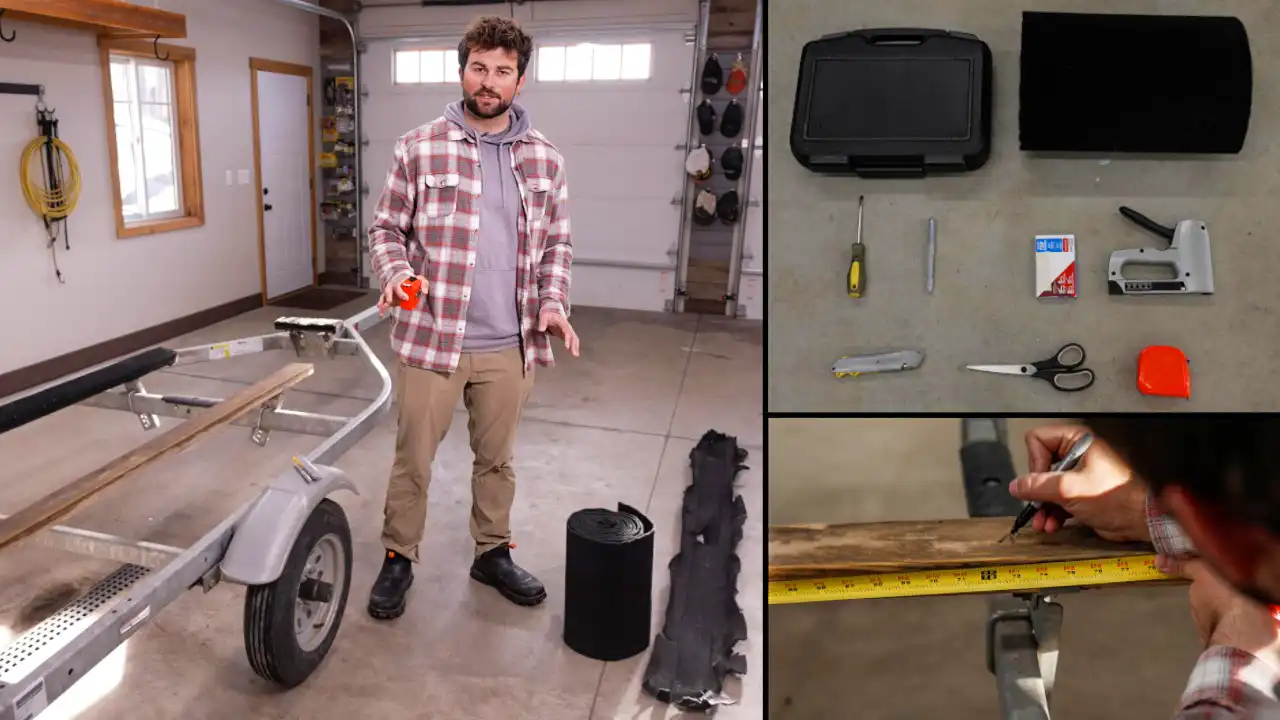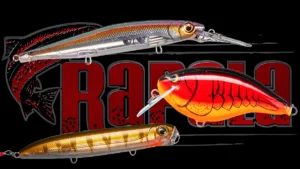For pro bass angler Cliff Pace, the post-spawn period is the best time to catch a pile of bass on shallow to mid-depth balsa crankbaits. He explains where to find transitional bass between spawning flats and offshore structures and how to choose and use crankbaits to locate and trigger bass feeding up on bluegill and shad.
LURES AND GEAR USED
- CRANKBAIT (shallow) – Black Label Tackle Cliff Pace 1.5 Squarebill Balsa Crankbait
- CRANKBAIT (mid-depth) – Black Label Tackle Prowler MR (medium runner) Crankbait
- ROD – TFO-Temple Fork Outfitters Resolve Bass Rod (ICAST 2022 launch – currently unavailable)
- REEL – Savage Gear SG8 100 Casting Reel, 6.6:1
- LINE – HI-SEAS 100% Fluorocarbon, 12-pound
- BOAT – Skeeter FXR20 Bass Boat
- TROLLING MOTOR – Garmin Force
The early post-spawn coincides with late spring or early summer, and it’s creek channel cranking 101. Suppose you know where the bass spawn. Find the first edge adjacent to it and deeper water. Better yet, find a spawning flat edge off a creek channel turn — an ideal place for these fish to stack up.
It’s hard to see shallow post-spawn bass on your graphs, so you need to fish through likely areas. Look for hard spots with a mix of wood on side imaging, then attack these areas with natural and buoyant balsa crankbaits. As the owner and designer of Black Label Tackle, Pace knows a thing or two about crankbaits. Balsa provides natural action and excellent buoyancy to fish clean through cover while imitating shad and bluegills. Keep a shallow and mid-depth crankbait at the ready to maintain contact with the bottom and cover as you search.
Lastly, Pace discusses his optimal rod, reel, and line setup for fishing smaller crankbaits (less than 1/2-ounce). It’s no surprise — a medium-power, mod-fast action rod paired with a mid-speed reel spooled with 12-pound fluorocarbon gets the nod. Still, he’ll go as light as a 10-pound line to get the bait deeper or up to a 20-pound line when fishing crankbaits around heavy cover. Adjust to your situation.


